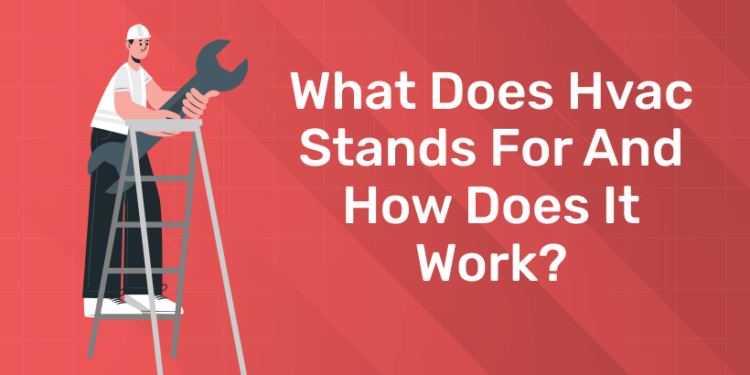Table of Contents
Homeowners who live in areas with mild year-round weather can often use natural ventilation to keep their homes comfortable. However, most of us need help from our residential heating, ventilation and air conditioning (HVAC) systems. These important home systems heat or cool the air, filter particles, and regulate indoor humidity. We will cover the different types of HVAC systems and when they are most useful.
What is HVAC?
The acronym HVAC stands for heating, ventilation and air conditioning. This is a general term for all the different types of cooling and heating systems that homeowners use to change the temperature and humidity in their homes.
HVAC systems also improve indoor air quality through mechanical ventilation and filtration. Some common HVAC systems include central air conditioning units, ductless mini-splits, furnaces, and boilers.
HVAC also includes large-scale refrigeration systems in commercial buildings.
How does HVAC work?
Most commonly, a HVAC system is a forced air system that provides heating and cooling as air circulates through the system. Ducted systems, such as central air conditioning, have a central air treatment unit and a fan that circulates the treated air through the building’s ducts and into the main living space.
Ductless systems like mini splits do the same thing, but they exchange air directly with the living space instead of through ducts. As air passes through HVAC equipment, it can pass through air filters to remove allergens, dust, or other particles.
Start a Rewarding Career in MEP! Free Demo Classes Here!
Master MEP Design with Industry-Leading Training!
Gain in-depth knowledge of Mechanical, Electrical, and Plumbing (MEP) Design with expert-led courses. Learn HVAC, fire safety, sustainable building strategies, and BIM applications to excel in the construction industry.
Know MoreHVAC system basics
The HVAC system contains many important components, including:
Air ducts
A building’s ductwork is a system of ducts through walls and ceilings to transfer heat or cooled air from a central HVAC unit to many parts of the building. Ducts must be sealed and insulated for best energy efficiency. Air ducts are attached to air conditioners and heating equipment using special sections of tubing called ducts.
Typically there are two ventilation systems in a system: supply ventilation ports handle the discharge and return ventilation ports handle the inflow.
Air Handler
The air handler is the internal part of a central heating or cooling system that moves conditioned air throughout a building. It contains a blower motor and a fan that sends hot or cold air through ducts.
The air handling system also brings in air for treatment. In an air conditioning unit, the air handling system contains evaporator coils that help cool the air as it passes through.
Condensers
The condenser is the outdoor unit of the central air conditioning system. It acts as a heat exchanger for refrigerant, a chemical used in air conditioners that creates a cooling effect when it expands or evaporates.
The condenser contains condenser coils, which release heat from the refrigerant to the outside air and compressor, preparing the refrigerant to return indoors and cool more of the air.
Humidifiers and dehumidifiers
Depending on the local climate, the air in your home may need to be humidified or dehumidified to make your home comfortable and protected from mold. Humidifiers add moisture to the air and dehumidifiers remove it.
Air conditioning systems automatically dehumidify the air, but you will need to add a separate humidifier to your HVAC system in dry climates.
Refrigerant
A refrigerant is a liquid used to transfer heat from one place to another. In air conditioners, it absorbs heat from the indoor air and transfers it outside, thereby cooling the indoor environment. Freon is a brand of refrigerant, but it is sometimes used to refer to all refrigerants, much like how Kleenex represents all brands of paper towels.
Thermostat
Most HVAC systems have a device that regulates the operation of the system called a thermostat. The user sets the thermostat to the desired temperature and the HVAC system runs until the temperature is reached and then shuts off. This helps save energy and maintain a comfortable environment.
Vents
Vents in an HVAC system connect ducts inside or outside a building. They serve several purposes, such as ensuring air circulation and bringing in fresh air.
Types of HVAC Systems
HVAC systems can provide heating, cooling, or both. Below are some of the most common systems you will find in homes today.
Air Conditioning
All air conditioners work the same way: Blowing indoor air through tubes filled with refrigerant to remove heat and moisture from the air. The heated refrigerant then moves to the outside of the system, where it cools before returning inside to start the process again. However, each system has a different way of packaging the components.
Central Air Conditioning
Central air conditioning is a split system, requiring both an indoor air handler and an outdoor compressor. These are the most powerful and efficient types of air conditioners, but central air conditioners have the highest installation and operating costs.
They also require ductwork, so installing central air conditioning if your home isn’t built to accommodate it will be very expensive. However, in hot climates, central air conditioning will be of great help in bringing comfort to the entire house.
Start a Rewarding Career in MEP! Free Demo Classes Here!
Mini Split
Mini split systems also require an outdoor condenser and one or more indoor air handlers, but they do not require ductwork. Instead, homeowners install an air handler in each room they want to cool.
Mini splitters are a great choice for cooling multiple rooms in an older home or a room without existing ductwork. They are also more customizable than central air conditioners. Not everyone likes the look of wall- or ceiling-mounted air conditioning units, but there are ways to hide them.
Other Air Conditioners
Undivided air conditioning systems such as window units and portable air conditioners contain both the air handler and condenser in the same housing. In a window unit, the condenser side faces outward to release heat and the air handler faces inward to distribute cool air.
Portable air conditioners typically connect to windows via detachable hoses, but can be packed up and stored away during colder months. These units only cool one room at a time, but they are cheaper than fixed split systems and more affordable to operate.
Boiler
Boilers are quite rare HVAC equipment because they do not have forced air ventilation. Instead, the boiler heats the water, sometimes beyond its boiling point until it turns into steam, to send it through a network of radiators throughout the building. Heating radiators then heat the air in each room. Boilers can run on natural gas, including propane, oil, electricity or even wood.
Furnace
Furnace burns fuel to heat air, which is then blown through the house’s ducts to distribute it throughout the house. Propane and natural gas furnaces are the most common and least expensive to operate, although some older homes in cold climates may still have oil-burning furnaces.
These are powerful heaters but they can produce harmful fumes such as carbon monoxide and must be vented properly. Electric furnaces exist but use a lot of energy and heat slowly so are often found in temperate climates. Many mini split systems can also be used as electric furnaces.
Heat pump
Heat pump system transfers heat indoors in winter and outdoors in summer, providing both heating and cooling. These systems are very efficient: An electric heat pump can heat your home with about 50% less electricity than a comparable furnace. However, installing them can be expensive, especially if you choose a model that uses renewable resources such as geothermal energy.
Packaged system
Packaged system combines heating and cooling equipment in a single outdoor enclosure. Heat pumps with additional evaporator coils for cooling are one type of complete system, and air conditioners with additional heating strips are another type.
These systems save interior space by placing all equipment outdoors, but they are generally not as powerful or efficient as other systems. Therefore, they are mainly used in small houses.
Radiant Heating
Radiant heating heats your walls or floors directly, warming without the need for air circulation. Most of these systems, called hydronic systems, use hot water or steam from a boiler to generate heat, but others may use electric heating cables.
Radiant heating is energy efficient and reduces the circulation of allergens, but is difficult to install, especially if your home wasn’t originally designed for it.
Start a Rewarding Career in MEP! Free Demo Classes Here!
What is the difference between HVAC and air conditioning?
Air conditioning is a type of HVAC system. Essentially, all air conditioners are HVAC systems, but not all HVAC systems are air conditioners.
HVAC stands for heating, ventilation, and air conditioning, so it also includes heating and ventilation systems such as furnaces, boilers, and heat pumps.
However, many people use the terms “HVAC” and “air conditioning” interchangeably, which causes confusion.
Master MEP Design with Industry-Leading Training!
Gain in-depth knowledge of Mechanical, Electrical, and Plumbing (MEP) Design with expert-led courses. Learn HVAC, fire safety, sustainable building strategies, and BIM applications to excel in the construction industry.
Know MoreProfessional vs. professional DIY HVAC Repair and Maintenance
It’s best to hire an HVAC technician to repair or maintain your heater, air conditioner or ductwork. Nearly all states require these technicians to maintain current licensing and complete training and apprenticeship programs to ensure they are up to date with the latest technology. Very few homeowners have the knowledge, expertise, or tools to work on their HVAC systems themselves, as it is a highly specialized field. You can install a small window air conditioning unit yourself, but you should always call a professional if you plan to open or repair your system.
Join Entri’s Rewarding HVAC Course!
|
Engineering Upskilling Courses
|
| MEP Course |
| BIM Course |
| Quantity Surveyor Course |
| Structural Design Course |
| MEP QS Course |











